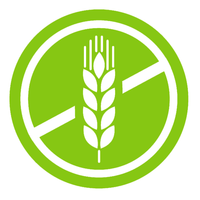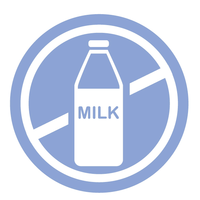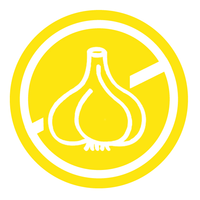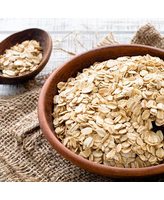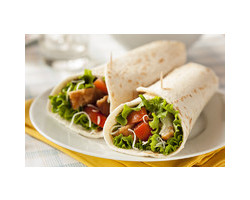Top Tips for Understanding Food Labels
Author: Laura Date Posted:15 September 2020
In today’s society, people are leading busier lifestyles and are searching for convenient and quick food options. To ensure that food products can maintain a sufficient shelf life, some means of preservation need to occur. This can be in the form of preservatives, stabilisers or/and salt. Heating foods to high temperatures is also a crucial step in food processing to minimise the risk of pathogenic contamination. Although this process is important for Food Safety, some of the vital nutrients in foods are destroyed during this process.
The term “Fresh is best” is still the most important message that needs to be practiced, with fresh fruit, vegetables, legumes and wholegrains still being a healthier food option for consumers. The practicality and diversity of processed foods is hard to avoid, but if you choose to consume these packaged options it is important to understand what it all means.
A Nutrition information panel is required on most packaged foods sold in Australia. This is regulated by Food Standards Australia New Zealand (FSANZ) through the Food Standards Code.
Nutrition information panels provide information on the average amount of energy, protein, fat, saturated fat, carbohydrate, sugars and sodium in the food. If a nutritional claim is being made, the nutrient must be clearly specified on the packaging, e.g. a ‘high in vitamin C’ claim must show the amount of vitamin C and a ‘good source of fibre’ claim must show the total dietary fibre. It is also a requirement that food labels specify the percentage of a specific ingredient, such as the amount of strawberries in strawberry yoghurt.
Reading a nutritional panel correctly, is extremely important but can sometimes be confusing. The values are specified per serving and per 100g. To maintain a healthy lifestyle and minimise particular health conditions such as obesity, diabetes and cardiovascular disease, it is essential to educate consumers about what is considered “healthy” levels:
Salt: Foods containing less than 120mg sodium per 100g is considered to be low salt. Consumers are best to aim for foods with less than 400mg of salt per 100g.
Sugars: Based on an adult diet of 8700 kilojoules a day, 10% of total energy means consuming no more than 55g per day is recommended. The “total Sugars” value on the nutrition information panel is a combination of added sugars and naturally occurring sugars in food, such as Lactose in Milk.
Fats: For heart health, saturated fat should be limited to 7% of your total energy intake. Based on an adult intake of 8700 kilojoules, this would approximate to 16g of saturated fat. Foods containing Trans-fats should be avoided, these can be usually found in products using hydrogenated oils.
Protein: Based on an adult intake of 8700 kilojoules, 50g of protein is the guideline for consumption daily. When choosing animal based proteins, choosing options with a lower saturated fat content is ideal.
Each individual requires different amounts of kilojoules, based on your age, height, weight, sex and the amount of physical activity you do. It is important that you stick to the serving size when eating packaged good, as estimating can lead to extra kilojoules, salt and sugar your body doesn’t require. The number of servings are generally outlined on the Nutrition Food Panel and this ensures you consume those products according to these guidelines.
Marketing products to specific consumers has become one of the most controversial topics within food packaging. Some children’s products now feature “famous” characters, which entices consumers, without considering the actual ingredients or processing involved. These characters are generally placed on biscuits, sweetened juices and some cereal bars, which not only contain sugars, but has no nutritional benefit to the child. The same can be stated for when products specify misleading language such as the use of the word “light or lite.” This does not necessarily mean the product is better for you, but that it may be lower in fat but higher in sugar to increase palatability for consumers.
There are now many government incentives to encourage consumers to make healthier choices for packaged food and to try and reduce the increase rise of obesity:
The Health Star Rating: is the most recent front-of-pack labelling system that rates the overall nutritional profile of packaged food and assigns it a rating from ½ a star to 5 stars. It provides a quick, easy, standard way to compare similar packaged foods. The higher the star rating, the “healthier” the choice. Each food item is labelled per 100g serving. This system can sometimes confuse consumers and can lead them to believe that the food product is a “healthier” option. It is still so important to look at the ingredients carefully, as there is no consideration given for the ‘cleanness’ of the food, or how natural it is, nor the quality of the ingredients used to achieve certain nutrient levels. A higher star rating can be achieve on a heavily processed food, with the addition of certain nutrients but can be so tainted from its original state.
Heart Foundation Tick: is a particular standard that is designed to help consumers compare similar foods and choose the healthier option. The “tick” is an indication that that particular product is lower in saturated fat, Trans fat, salt and kilojoules. It can give consumers the option to choose food that contain ingredients and nutrients that are better for you, such as fibre, calcium, wholegrains and vegetables. The Heart Foundation guidelines have been linked to some controversy over the years, as some people suggest it does not necessarily mean the product is still a healthier option. Some products bearing the “tick” are still considered unhealthy food options, such as frozen meals and some margarines.
Processed food has most certainly become more prevalent in today’s food culture. Not all packaged foods are unhealthy, but trying to educate yourself on making better food choices is key and trying not to get caught up in the “marketing” or “disclaimer” side of labelling should be greatly considered. The less ingredients in a product, the better, and ensuring that you are reading all the relevant information on the packaging is key to making better choices.


